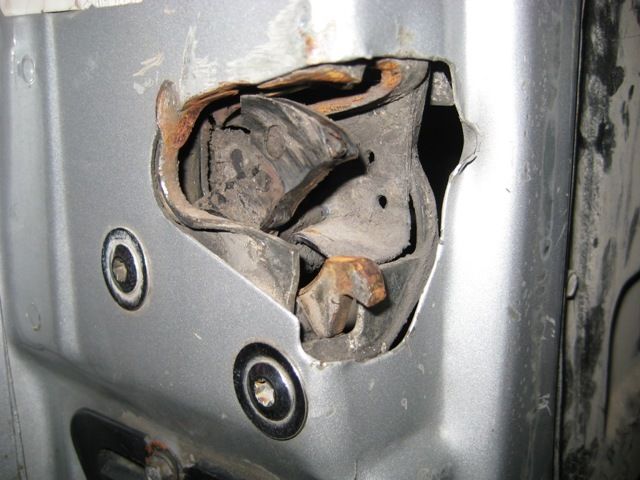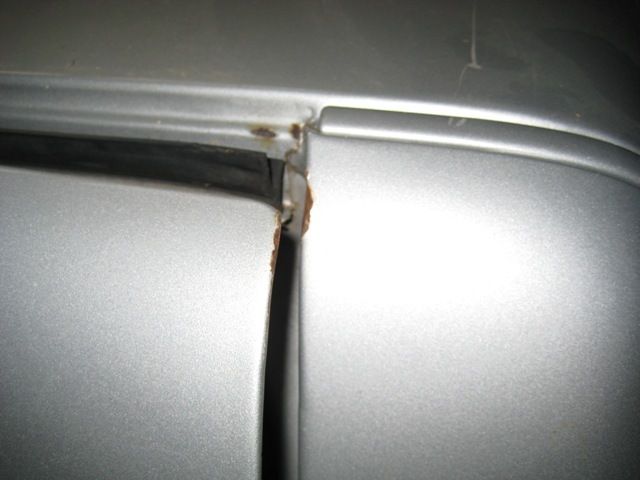R
Door adjustment
RC
randy curran
+1y
Ok I love my truck but the drivers door sags slightly and it hits the front fender a bit. I've adjusted quite a few doors but how the hell do you do this one???????? Of course my dad said just jam something in between the door and the fender and bend it back. I said no.

brianbgboy
+1y
there is a door alignment tool that you latch into your door latch with the door slightly open, the other end of the tool goes on the door striker. you pick up on the tool and it tweaks the hinges a bit. have you checked the pins and bushings in the hinge yet? they may need to be replaced.
RC
randy curran
+1y
I'll look into the bushings and such. I think they are ok but I'll look again. Very cool tool. Will it work on trucks?

brianbgboy
+1y
works great on trucks. i think it will work on most vehicles bro. later, brian
H
huskerdually
+1y
Show restraint,
don't make comment,
just don't say it.
AHHHHHHHHHHHHHHHH
don't make comment,
just don't say it.
AHHHHHHHHHHHHHHHH

krewzlo
+1y
Floor jack and a 2x4. But you have to be careful to not over do it. My guess is you need new pins and bushings though. They are cheap and probably need it even if it doesn't cure the sag problem.

svrdwgn
+1y
i imagine youre talking about your 89?
Seems like all Chevys that body style succomb to door sagging eventually...
I had to replace my pins and bushings as well. Cheap fix. It will appear to the eye that you dont need to replace them, when you actually really do. These trucks are notorious for that problem
Seems like all Chevys that body style succomb to door sagging eventually...
I had to replace my pins and bushings as well. Cheap fix. It will appear to the eye that you dont need to replace them, when you actually really do. These trucks are notorious for that problem

someotherguy
+1y
Correct, especially because the top pin retainer masks the slop in the hinge. Easiest ways to tell are open the door all the way and grab it from the rear edge and lift up, if it moves, you've got problems. Also close it all the way to where it just starts to touch the striker, and look at the body line below the window, compared to the cab. Once it's shut the striker will fool you into thinking it's not so bad because it will lift the door.
If you let the door sag for too long, pins and bushings won't fix it. The top hole in the top hinge portion that is connected to the door has a hole that keeps the top of the pin, it is an interference fit and does not use a bushing. When the bushings are toast, this hole starts carrying the load of all the weight of the door pulling down on it, and the hole eggs out. The bushing holes start egging out then, too. Then you replace the pins and bushings, and this hole now has slop and continues to let the door sag.
My "hack" fix for this instead of having to replace the hinges which is a huge PITA and the parts are expensive...is to go ahead and replace the pins and bushings, then jack the door up so the slack is in front of the pin (towards the front of the truck) and put the smallest possible tack weld in there to bridge the gap and stop the movement. You don't want to overdo it, in case the door gets wrecked or for any other reason you need to remove it, you'll hate yourself for welding too much because there's no room in there to work to grind the weld off so you can knock the pin out.
Other stuff that gets damaged from door sagging is the latch. Look at the top portion of the metal on the latch where it glides over the striker bolt, it should have a 90 degree bend and the shape of it should be relatively straight. Sagging doors cause it to drag across the striker and chew it up, curving it, and destroying that lip, which tends to dig into the latch pawl and make it not operate smoothly. Of course also the striker bolt gets torn up too.

Extreme sagging will cause the top corner of the door to hit the cab and wear a spot in it.

And all the door slamming that comes along with this much wear eventually causes this:

Lesson: spend the few bucks on some new hinge pins and bushings, before it's too late!
Richard
Post was last edited on Dec 22, 2011 08:20. Edited 3
times.

someotherguy
+1y
Restraint? What that be? (in Charlie Murphy voice)
C'mon and tell us how squarebody doors are better! My favorite memory of owning squarebodies was a very, very clean '86 Burb that required all 4 doors to be slammed, not just the driver door, one night after getting back from the grocery store I had to slam a rear door hard enough the glass shattered in it. That's quality!
Richard
H
huskerdually
+1y
I've done that. It amazes me how long some guys will let it go.
Related Discussions in Dually Exterior
Thread
Posts
Last Post